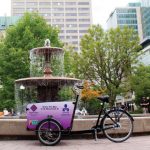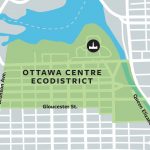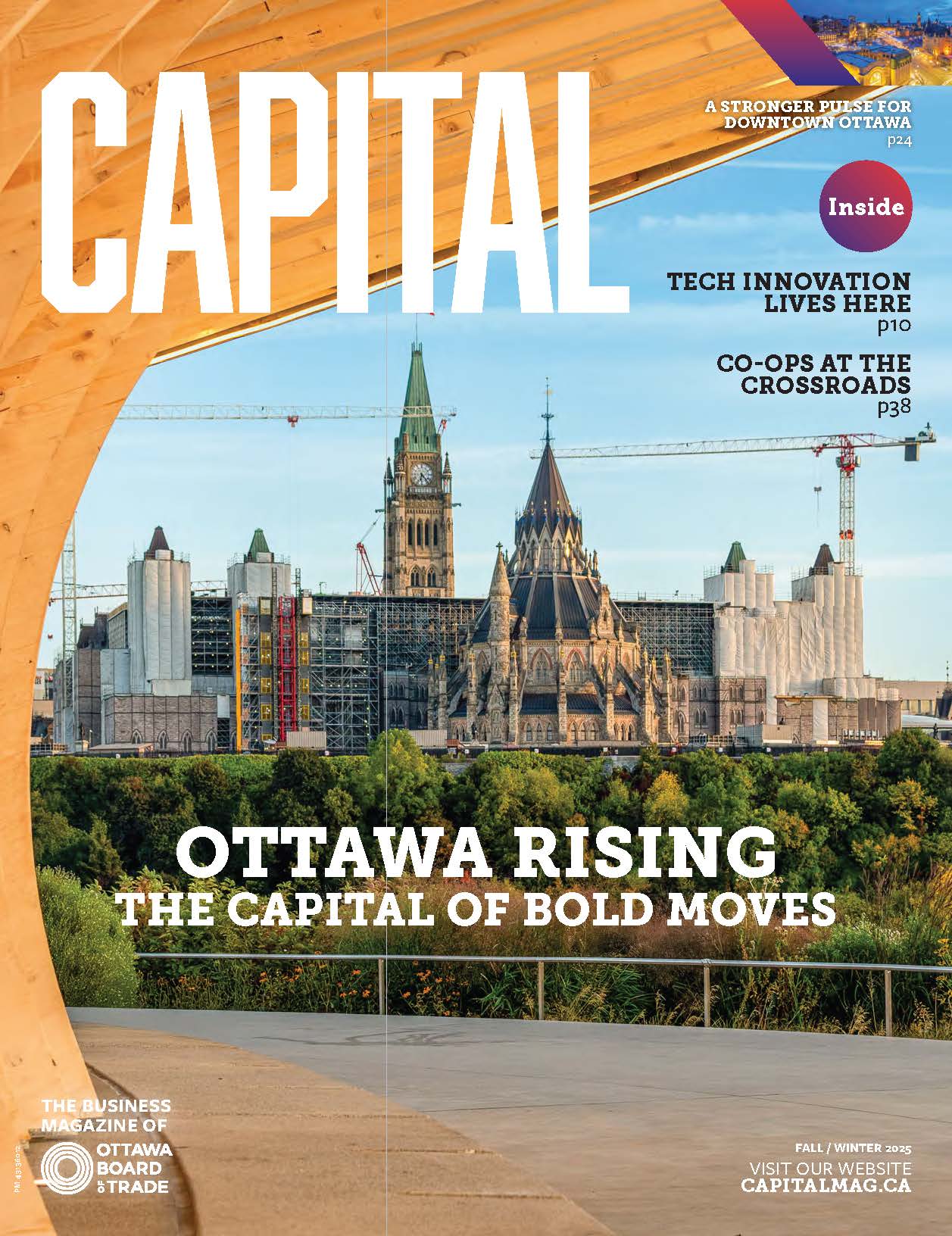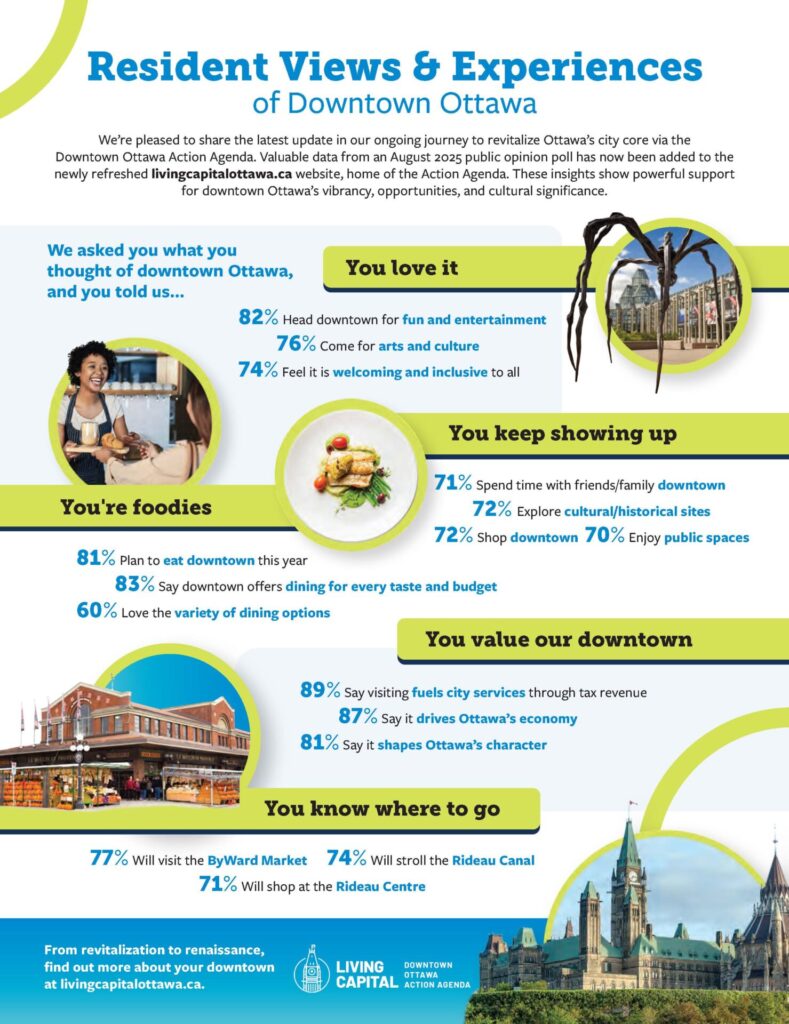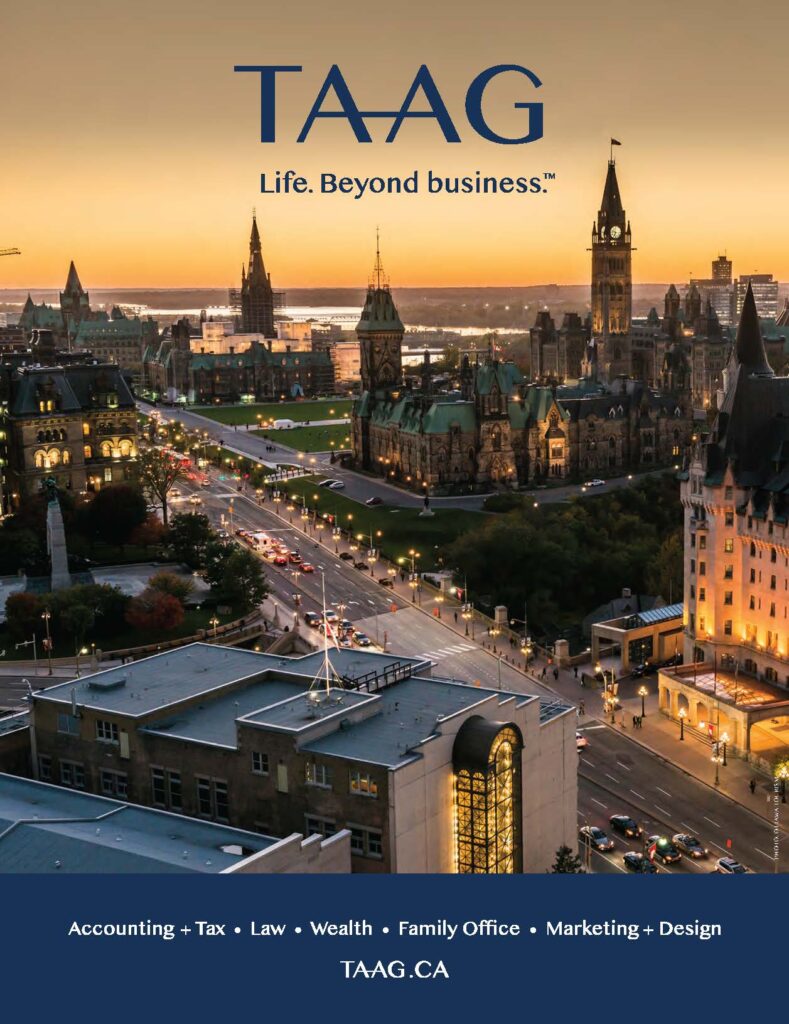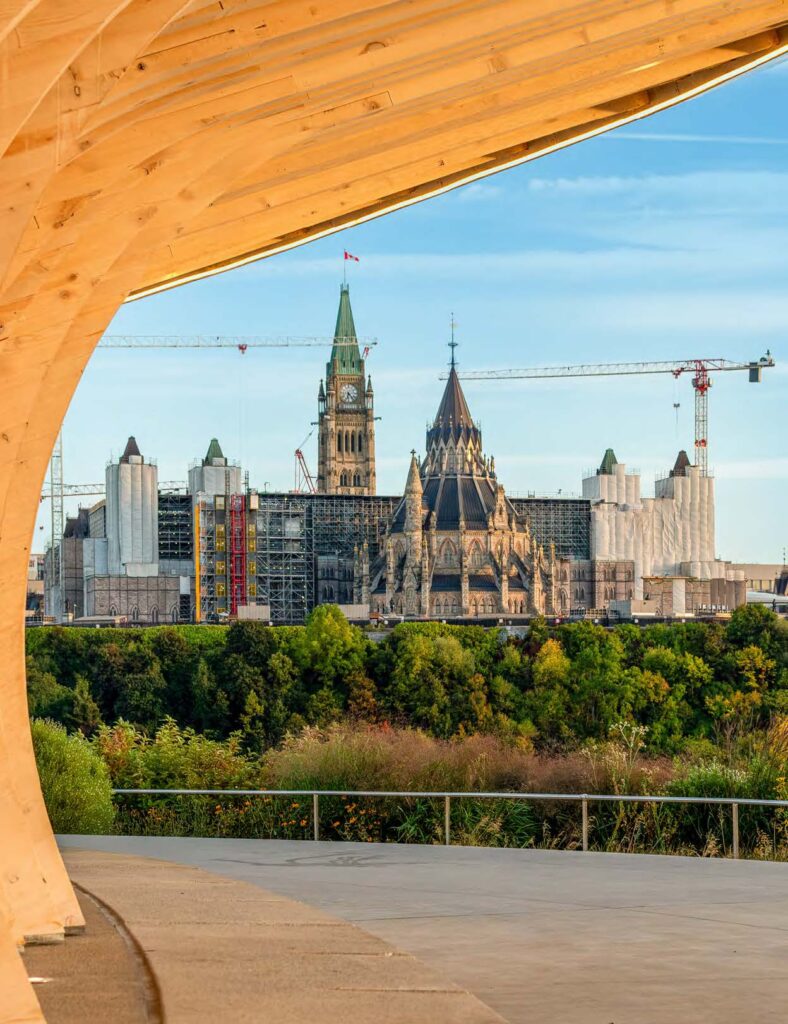Building The Capital: Rolling Out From the Centre
Ottawa Centre EcoDistrict programs get citywide traction
By Jeff Buckstein
When you step into the lobby of Ottawa’s Alt Hotel on Slater Street you can immediately see the effort that’s been invested to minimize its ecological footprint. From LED lighting to the furniture selection, every decision was made to make a difference.
Alt Hotel—a boutique eco-hotel—is situated in the Ottawa Centre EcoDistrict (OCED), Canada’s first community certified as part of the EcoDistricts movement—a U.S.-based initiative that works to empower neighbourhoods to make scalable improvements towards sustainability.
The OCED—which generally extends north to south from the Ottawa River to Gloucester Street and west to east from Bronson Avenue to the Rideau Canal—is among more than 300 EcoDistricts around the world that followed a rigorous certification framework that incorporates elements of health and well-being, connectivity, prosperity, place, resource regeneration, and living infrastructure.
The Ottawa effort was launched in 2012 with a mission to make the downtown core more sustainable, socially vibrant, and attractive to businesses and organizations looking to relocate or expand. By working with local businesses and other community partners, OCED focused on issues involving waste, water, energy, and transportation to reduce the environmental footprint of activities in the downtown core.
According to the OCED’s 2015 Sustainable Neighbourhood Action Plan, the district is home to a workforce of more than 90,000 people. And while it’s home to only 9,000 residents (and has the lowest density in the city), more than 100,000 people live within a 20-minute walk of the OCED. As a result, transportation issues were identified as a top priority.
A key part of the EcoDistrict’s work was to bring people together. Don Grant, former executive director of the OCED, is proud of what they accomplished in Ottawa Centre.
“We were able to establish a dialogue between businesses and government, and to assist the city in achieving some of its major objectives, including the improvement of cycling lanes and expansion of electric vehicle services to residents,” he says. In particular, he notes, they raised awareness about cycling, and ways to reduce the environmental impact of buildings.
Progress is also evident in Alt’s attention to detail. As part of its eco-friendly design, Alt’s toilets are equipped with three-litre and six-litre dual flush valves to save water. Underground wells supply geo-thermal heating in the winter and cooling in the summer. LED lighting is motion activated in public areas, hallways, and guest rooms. And their purchasing decisions reflect their commitment to buy local as much as they can.
“Our furniture is all Canadian—everything is made here, most of it in Quebec,” says Alt manager Jean Philip Dupré. “In our coffee shop, we have an in-house caterer that makes about 70 percent of the food we eat. Most of the rest is ordered through partners that we have throughout the city.”
Alt’s sheets, towels, and bathrobes are Canadian-made, and they do all of their laundry in-house using chemical-free products. Dupré says their efforts save energy—and therefore costs—as well as support the environment.
Members of the OCED network are also thriving. The Canada Council for the Arts, an official EcoDistrict champion, received a gold EcoDistrict designation in January 2017 for its commitment to sustainable practices at its Elgin Street building.
“Our workplace includes high-efficiency lighting, programmable thermostats, motion sensors and Energy Star office equipment,” says André Cleroux, manager of the Council’s administrative services office.
Council employees also diligently divert paper, cans, glass and compost from landfill sites. And the building features water-efficient fixtures, along with a rainwater cistern to collect and use storm water from the roofs, he explains.
While the OCED began as a downtown initiative, it has recently been transformed to extend the reach of its most successful programs, says Grant, who now sits on the organization’s board of directors. OCED’s initial funding sources—which included grants from the Ontario Trillium Foundation and the federal Green Municipal Fund—have been exhausted, and its programming is shifting gears.
Major OCED projects are being expanded citywide, including the Cycle In program that promotes cycling to work, an electric vehicle day, and the Environment Week program. Responsibility for these programs has been transferred to Ottawa’s EnviroCentre, which will roll them out across the city.
Jeff Buckstein is a Kanata-based freelance business writer.
There’s more than one way to keep the lights on
Energy Ottawa, a sister company of Hydro Ottawa, is the largest municipally owned producer of green power in the province of Ontario, with a generation capacity of 128 megawatts—enough renewable energy to power 107,000 homes annually.
Here is a breakdown of where its renewable generating capacity comes from.
 Hydroelectric Generation
Hydroelectric Generation
(116 megawatts/95,000 homes annually):
Energy Ottawa owns 100 percent of the hydroelectric
facilities at the Chaudière Falls site on both sides of
the Ottawa River, including:
- Six hydroelectric stations at Chaudière Falls on the Ottawa River with a total capacity of 53.5 MW
- Six hydroelectric stations in Eastern Ontario with a total capacity of 8.3 MW
- Four hydroelectric stations in upper New York State with a total capacity of 22.6 MW
 Landfill Gas-to-Energy(10.2 megawatts/10,000 homes annually):
Landfill Gas-to-Energy(10.2 megawatts/10,000 homes annually):
Energy Ottawa owns majority
shares in two landfill gas-to-energy facilities, which turn
methane gas into renewable energy; combined, these facilities
reduce greenhouse gas emissions by 280,000 tonnes a year:
- A landfill gas-to-energy plant at the Trail Road Landfill with a capacity of 6 MW;
- A landfill gas-to-energy plant at the Laflèche Landfill in Moose Creek, ON with a capacity of 4.2 MW
Sol ar
ar
(2.3 megawatts/ 2,000 homes annually):
Eight large solar generation systems are installed
on municipal buildings, consisting of 8,861 solar panels
Ottawa companies find active business building passive houses
By Matt Curtis
 Passive houses might require a bigger upfront investment, but Ottawa-area builders are making them more affordable and attractive for people who want to build a sustainable home.
Passive houses might require a bigger upfront investment, but Ottawa-area builders are making them more affordable and attractive for people who want to build a sustainable home.
Passive houses are structurally similar to conventional homes, but are designed to meet rigorous energy efficiency standards—typically requiring thicker walls and roofs, better insulated foundations, and specialized doors and windows. For a modest cost increase compared to a conventional new build, a passive home can substantially reduce a home’s energy bill. In addition to energy savings, passive homes are also more comfortable, thanks to improved temperature regulation and ventilation. “The cost to build passive is approximately five percent greater than conventional construction but the savings in operating costs translates to a cheaper way to live,” says Paul Kealey of EkoBuilt, an Ottawa-based custom home building company.
EkoBuilt has found success in their multi-level approach to simplifying passive construction. They offer plans, material kits, and construction services separately or altogether to clients.
For Kealey, solar panels are an integral part of making passive homes make financial sense. He speculates that the return on investment based on energy bill savings could be as little as five years with a net-metered six-kilowatt solar array costing $18,000.
Homes can be certified to the passive standard, or designed with the same key principles. Casey Grey, CEO of The Conscious Builder, recommends that we simply “build better” up front to generate long-term benefits. In a highly competitive housing market, he encourages clients to focus less on the certification and the upfront cost, and to look instead at what they can save month over month.
“With the technology we have, if you plan it properly and have the proper team up front, you can be cash flow positive from the start,” Grey says.

